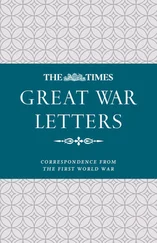Ted Halstead - The Saudi-Iranian War
Здесь есть возможность читать онлайн «Ted Halstead - The Saudi-Iranian War» весь текст электронной книги совершенно бесплатно (целиком полную версию без сокращений). В некоторых случаях можно слушать аудио, скачать через торрент в формате fb2 и присутствует краткое содержание. Год выпуска: 2019, Издательство: Independently published, Жанр: Боевая фантастика, Триллер, на английском языке. Описание произведения, (предисловие) а так же отзывы посетителей доступны на портале библиотеки ЛибКат.
- Название:The Saudi-Iranian War
- Автор:
- Издательство:Independently published
- Жанр:
- Год:2019
- ISBN:нет данных
- Рейтинг книги:4 / 5. Голосов: 1
-
Избранное:Добавить в избранное
- Отзывы:
-
Ваша оценка:
- 80
- 1
- 2
- 3
- 4
- 5
The Saudi-Iranian War: краткое содержание, описание и аннотация
Предлагаем к чтению аннотацию, описание, краткое содержание или предисловие (зависит от того, что написал сам автор книги «The Saudi-Iranian War»). Если вы не нашли необходимую информацию о книге — напишите в комментариях, мы постараемся отыскать её.
The Saudi-Iranian War — читать онлайн бесплатно полную книгу (весь текст) целиком
Ниже представлен текст книги, разбитый по страницам. Система сохранения места последней прочитанной страницы, позволяет с удобством читать онлайн бесплатно книгу «The Saudi-Iranian War», без необходимости каждый раз заново искать на чём Вы остановились. Поставьте закладку, и сможете в любой момент перейти на страницу, на которой закончили чтение.
Интервал:
Закладка:
None of these arguments had worked.
So, Kazem and everyone else who had been forced to look for new jobs after the JCPOA had been approved had rejoiced when the Americans had walked away from the deal in 2018. Especially the ones who hadn’t been as lucky as Kazem, and hadn’t been able to get work making some use of their skills. And even more so for the ones who hadn’t managed to get work at all.
But it hadn’t worked out quite the way Kazem imagined. There were still politicians hoping that the Europeans would eventually defy the Americans, in spite of threats against anyone trading with Iran. Russia could offer little but weapons, but the Chinese would buy all the oil Iran had to sell and there was little the Americans could do to stop them. On condition, the Chinese had told the Iranian government privately, that it did not resume a full-scale race to obtain a nuclear weapon.
So, threats to resume weapons-grade uranium enrichment? Certainly. Maybe some enrichment out of view of the International Atomic Energy Agency inspectors? Sure. How about some ballistic missile testing? Absolutely.
What about rehiring Kazem and everyone else who had been fired in 2015 and finally getting Iran enough nuclear weapons to keep it from being pushed around by the Americans, Saudis, or anyone else ever again?
Well, no.
Kazem sighed and looked around his office at the University of Tehran. He knew he’d been lucky to get a job here as a full professor of nuclear physics.
Not because he had any doubt about his qualifications. His mother and father had both studied at an American university, and so he had been born in the US. That gave him the US passport he needed to study at Michigan State University, to his surprise the school with the top nuclear physics program in the US, and some would argue in the world.
Of course, MSU didn’t teach anyone how to build a nuclear weapon. With the knowledge of the science behind one, though, the challenge was really to make the most effective use of the plutonium or highly enriched uranium needed to create a weapon.
Kazem smiled sourly at the University of Tehran motto, engraved on a sign in his office — “Rest not a moment from learning”.
That was really what bothered him about this job. He was certainly helping his students learn, and that was good. But now that he had been separated from the concrete, tangible results of what he knew, he felt as though he would never learn anything more himself.
If only, Kazem mused, he could do something to change that.
Captain Jawad Al-Dajani was pushing the tanks of his M1A2 platoon as fast as they could go, which on the dirt road they were using wasn’t very fast.
Still, he was optimistic. The RSAF Typhoon that had spotted the missile being readied for launch had already dropped its ordnance load on another target, and by headquarters’ calculation it would take longer to reload, refuel and return than for his tanks to reach the launch site.
Jawad was determined to make sure that HQ’s calculation was correct.
He smiled grimly as he thought about the Typhoon pilot who had tried to take out a missile launch site the previous week with his cannon. After hearing about the incident Jawad had looked up the cannon’s specifications out of curiosity, and had been impressed by what he read. The Mauser BK 27 gas-operated cannon fired a 27 mm round at a selectable rate of fire ranging from one thousand to seventeen hundred rounds per minute. Though mounted in many different aircraft, the BK 27 in the Typhoon was a special model that used a linkless feed system to improve reliability.
Jawad had nodded as he read that Mauser had later become Rheinmetall, the same German company that had made the cannon in his M1A2 tank.
Well, he thought, who could blame the Typhoon pilot for wanting to try it out once on a live target?
Unfortunately, it ran straight into an ambush. The Houthis had an Iranian-supplied truck-mounted Herz-e-Nohom, a compact radar and electro-optically guided mobile air-defense system based on the Chinese HQ-7, itself a copy of the French Crotale, both of course unlicensed. Hit during its attack run while it was pointed straight at its ground target objective, the Typhoon had no chance to recover before it slammed into the Yemeni earth.
Jawad just hoped its explosion took a few Houthis with it.
As they neared their objective, Jawad spoke over his headset to the rest of his platoon, reminding them to stay vigilant against ambush. Multiple missiles had been launched out of this valley precisely because most of it was difficult to access, and it was still close to the Saudi border. More than one Saudi tank had already met its end here.
Jawad’s platoon took a sharp bend in the road that suddenly made their objective visible in the clearing ahead. There was the missile!
Very quickly, Jawad saw that the missile was in fact a decoy made of metal drums and painted cardboard. He thought bitterly that a Houthi with a welding torch and some auto body experience had probably slapped it together in a few hours.
Jawad was wrong. It had taken two Houthis a full day to make it, and the help of three others to put it in place.
Jawad immediately ordered his platoon to search for the anti-tank missile he knew was waiting for them. He knew better than to order a retreat back the way they had come, since outrunning a missile in a tank was… unlikely.
This time, Jawad was right.
The Houti crew of the 9K115-2 Metis-M were in a camouflaged position, that for good measure was also dug-in so only the missile launcher and their heads were exposed. The Metis-M was designed in Russia and produced in Iran under license, so the crew also had the latest missile made for the launcher, the Metis M1. This model increased armor penetration from the original Metis M missile’s eight hundred to nine hundred fifty millimeters.
The Metis-M had a well-deserved reputation for lethality from its use in Syria and Lebanon, where its victims included Israeli tanks. Today it would add an Abrams tank to that tally.
The missile only needed seconds to travel from its launch point to the M1A2 tank directly behind Jawad. Like the original Metis M, the M1 was also wire-guided. It served well to allow its operator to direct the missile precisely to its target.
The Abrams tank took a direct hit, and immediately stopped and burst into flame. Its hatch flew open, and two crew members tumbled out, one of them on fire. The other crew member was able to put out the flames, and both of them stumbled as far away as they could get from the burning tank.
This was an excellent decision. Within seconds either the fuel or the ammo, or perhaps both, inside the Abrams exploded with enough force to turn the tank on its side.
Though the wire was useful in guiding the missile, and was too thin to be easily seen by the enemy, a sharp eye could spot it. Jawad’s eyesight was excellent, and so was his gunner’s. Moreover, a faint smoke trail led from a point in the bushes in their left flank to the destroyed tank.
The Metis-M crew were in the middle of reloading when they came under fire from both cannon and machine gun fire from the three surviving tanks.
Most of the rounds missed. However, only a single hit from Jawad’s M256 120 mm smoothbore cannon was more than enough to ensure that no other missiles were fired at his tanks.
Confirmation that Jawad had hit the anti-tank crew came when the three remaining Metis-M missiles exploded simultaneously, creating a fireball that easily eclipsed the gouts of earth thrown up by the impact of the other rounds. It gave him some satisfaction.
But Jawad knew it wasn’t going to bring back his two dead crewmen inside the burning Abrams tank.
Читать дальшеИнтервал:
Закладка:
Похожие книги на «The Saudi-Iranian War»
Представляем Вашему вниманию похожие книги на «The Saudi-Iranian War» списком для выбора. Мы отобрали схожую по названию и смыслу литературу в надежде предоставить читателям больше вариантов отыскать новые, интересные, ещё непрочитанные произведения.
Обсуждение, отзывы о книге «The Saudi-Iranian War» и просто собственные мнения читателей. Оставьте ваши комментарии, напишите, что Вы думаете о произведении, его смысле или главных героях. Укажите что конкретно понравилось, а что нет, и почему Вы так считаете.












